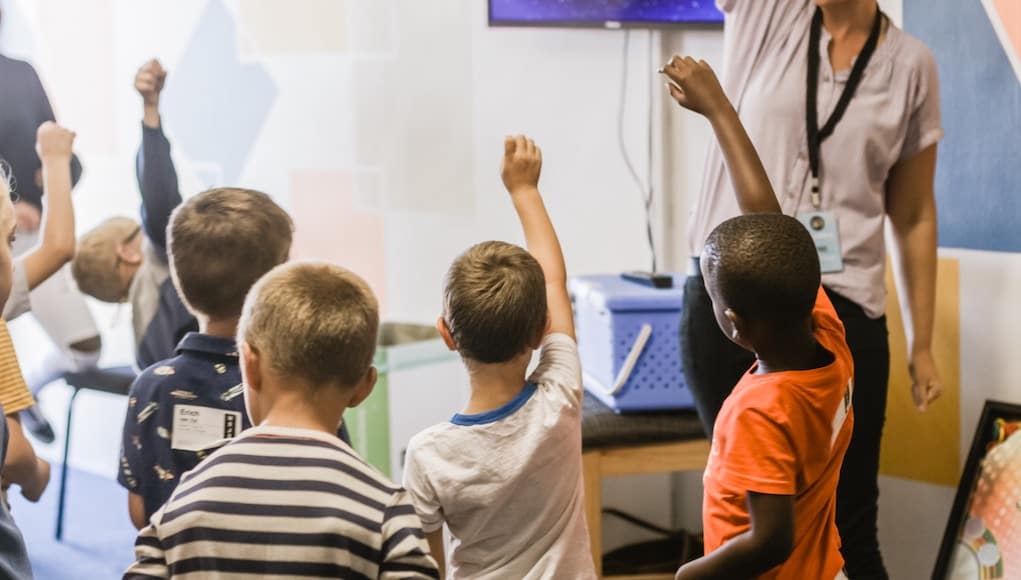Is Personalized Learning the Latest Tool To Increase Student Engagement?

The principal of a newly launched Project-Based Learning school recently asked me to deliver a demonstration lesson to a group of ninth-grade students while a team of teachers observed.
I have been teaching for 25 years to great acclaim so I’m used to quickly connecting with learners and engaging them in a meaningful, relevant, and informative experience. Not this time. Using any metric of engagement, my performance was a YouTube-worthy epic fail.
The experience prompted me to reflect on my performance. Had my skills waned? Were the techniques I used dated? Had the very nature of engagement changed?
I’ll save the first two questions for later exploration and focus in this space on the current conception of student engagement.
The phrase “student engagement” became part of the education lexicon in 1996 when it was labeled “the latest buzzword in education circles” by Daniel R. Kenney, Ricardo Dumont and Ginger S. Kenney in a book called Mission and Place: Strengthening Learning and Community Through Campus Design. A few years earlier, Phil Schlechty made the first attempt at codifying student engagement. Schlechty said that students who are engaged exhibit three characteristics: They are attracted to their work; they persist in their work and they take visible delight in accomplishing their work.
Around the same time, Richard Strong, Harvey Silver and Amy Robinson began to publish the results of research they had been compiling for the better part of a decade. The authorial team advised teachers that they should ask themselves four important questions in order to score the level of engagement among their students:
- Under what conditions are students most likely to feel that they can be successful?
- When are students most likely to become curious?
- How can we help students satisfy their natural drive toward self-expression?
- How can we motivate students to learn by using their natural desire to create and foster good peer relationships?
Using a modern lens, their criteria reveal what later would describe a close connection between conceptions of engagement and what we have come to call personalized learning. A relationship to student agency begins to appear as well, but more on that later.
In 2000, a team at the University of Indiana began to broadly publicize the results of the National Survey of Student Engagement, a task they continue to this day. The NSSE results provide an interesting time capsule that allows us to examine student engagement over the course over two decades. We can as well use Google Trends to track interest in this construct (student engagement) since 2004 when Google flipped the on switch for that research tool.
Over time, the drift in results seems to indicate that engagement among current undergraduates is now dictated by relevance, particularly as it relates to job prospects. Interestingly, when the non-profit Youth Truth Survey announced in 2017 its analysis of more than 230,000 student responses to its survey on engagement the report also implied (for secondary students) a connection between engagement and the relevance of what they were learning to future prospects.
The evolution continued. In 2012, Maryellen Weimer wrote a piece for Faculty Focus magazine that details strategies educators can use to promote student engagement. The emphasis from the 1990s on student self-expression and “natural desire” increased. Weimer called for instructors to enhance students’ self-belief, to create activities that extend their academic abilities, to adapt to student expectations, and to enable students to increase their social capital. Sounds a lot like personalization …
It’s 2019 and we are in the midst of a revolution focused on the accurate and reliable assessment of such formerly murky constructs as student engagement. It should come as no surprise that artificial intelligence is being used to assess student engagement. The University of Montreal is teaming with a Canadian technology company called Classcraft to explore the use of A.I. to measure engagement. According to a recent report, the Classcraft engagement management system is being used in 75,000 classrooms across 160 countries.
The Classcraft system allows the teacher to give students points for positive and supportive behaviors such as empathy. The elements of gamification are clearly present in this process.
This work aligns with familiar assessment practices that seek to quantify individual or collective levels of engagement. These often rely on proxies such as participation, following norms, comprehension tests/quizzes, checks for understanding, exit tickets, and self-reports.
When I began teaching in the 1990s we were obsessed with “time on task” and used many of these same low-tech assessments to measure who was tuning in and turning in. There is a ton of research that describes the relationship between time on task and positive student outcomes so this wasn’t a bad idea. But is that enough in the modern world of personalized learning?
I return to the original question and offer a thought. If student engagement has evolved from a time-on-task approach to one more aligned with the principles of personalized learning then we must invent new metrics.
John Spencer makes the argument that we have indeed entered a new era in our understanding of student engagement. He writes that education has gone through a series of progressions from compliance to engagement and now to empowerment.
As Spencer declares, “If we want students to be creative, self-directed learners, we need to go beyond student engagement and into empowerment. They need to own the learning.”
For more, see:
- Five Schools Sharing Student Learning to Increase Student Engagement
- The Results Are In On Student Engagement
- Getting Started with Personalized Learning
Stay in-the-know with innovations in learning by signing up for the weekly Smart Update.







Susie Highley
It's Indiana University.
top college in canada
great article. thanks for sharing it. keep it up